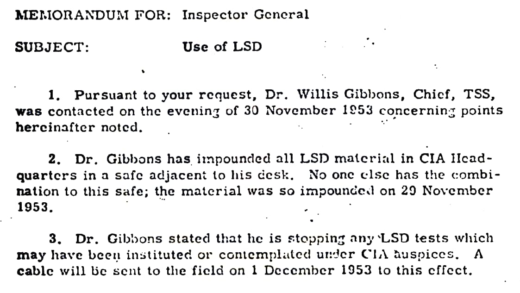Pneumatic tube systems are efficient transport mechanisms still relevant today. They originated in the 19th century and have evolved significantly, offering advantages in speed and security. Modern technology presents alternatives, but pneumatic tubes remain valuable in specific sectors. Their versatility extends beyond banking into libraries, manufacturing, and retail. Regular maintenance is essential for optimal performance, and ongoing evolution continues to enhance their functionality.
What is a Pneumatic Tube?
Pneumatic tube systems are fascinating mechanisms that transport items using compressed air. These tubes are often seen in banks, hospitals, and various businesses where quick and efficient delivery of documents or small packages is essential. A pneumatic tube system works by creating a difference in air pressure within the tubes, enabling the swift movement of carriers—small capsules that hold the items being transported. The speed of the system is impressive, with items traveling at speeds of up to 30 feet per second.
The History of Pneumatic Tubes
The history of pneumatic tubes dates back to the 19th century, a time of great innovation. The first practical pneumatic tube was developed in the 1850s, primarily for sending messages and small parcels. It gained popularity in urban areas, where it offered a solution to the problem of congestion. For instance, the London Pneumatic Dispatch Company established a network of tubes, which significantly improved communication between businesses. By the late 1800s, pneumatic tube systems had expanded into cities like New York and Paris, revolutionizing how goods and messages were delivered.
Materials Used in Pneumatic Tubes
Pneumatic tubes are constructed from various materials, each chosen for its unique properties. Common materials include:
- Steel: Often used for its strength and durability, steel tubes can withstand high pressure and are resistant to wear and tear.
- Plastic: Lightweight and flexible, plastic tubes are easier to install and can be used in a variety of settings.
- Glass: Although less common, glass tubes are sometimes used for specific applications where visibility of the contents is necessary.
These materials ensure the efficiency and longevity of pneumatic tube systems, allowing them to function effectively in various environments.
How Air Pressure Moves Objects in Pneumatic Tubes
The pneumatic tube system utilizes air pressure as its primary mechanism for movement. When air is compressed and directed through the tubes, it creates a pressure differential that propels the carriers along the pathway. Essentially, the mechanics can be broken down into a few key steps:
- Compression: A compressor generates high-pressure air, forcing it into the tube.
- Pressure Differential: As air rushes in, it pushes against the carrier, which is designed to fit snugly within the tube.
- Movement: The difference in pressure behind and in front of the carrier creates a forward thrust, moving it swiftly through the tube.
This air pressure mechanism is efficient, allowing items to travel at impressive speeds. The smoothness of the tube’s interior further minimizes friction, enhancing the system’s overall effectiveness. Understanding this process reveals why pneumatic tubes remain relevant in various applications, particularly in environments where speed and reliability are crucial.
Advantages of Pneumatic Tubes in Modern Settings
Pneumatic tube systems offer several advantages that keep them in use in modern settings, especially in banks and hospitals. Here are some key benefits:
- Speed: Items can be transported quickly, often within minutes, which is vital in time-sensitive environments.
- Efficiency: Pneumatic tubes reduce the need for human couriers, allowing staff to focus on their primary duties.
- Security: The enclosed nature of pneumatic tubes minimizes the risk of theft or loss during transport.
- Space-saving: These systems require less physical space compared to traditional transport methods.
For instance, in a hospital, medications and documents can be sent swiftly from pharmacy to patient care areas, enhancing patient care. Similarly, banks utilize pneumatic tubes to transfer cash and important documents securely and efficiently. The continued reliance on pneumatic tube systems underscores their practical benefits in today’s fast-paced world.
Challenges and Limitations of Pneumatic Tube Systems
While pneumatic tubes have many advantages, they are not without challenges. Here are some notable issues:
- Maintenance Needs: Regular maintenance is crucial to prevent breakdowns, which can disrupt operations.
- Limited Capacity: Pneumatic tubes can only transport small items, which limits their functionality compared to other transport systems.
- Initial Installation Costs: Setting up a pneumatic tube system can be expensive, making it a significant investment for businesses.
- Potential for Blockages: If not properly maintained, items can become lodged in the tubes, leading to costly repairs.
These challenges highlight the importance of careful planning and management when implementing pneumatic tube systems. Understanding these limitations allows businesses to make informed decisions about their use and maintenance.
Pneumatic Tubes vs Modern Technology
Pneumatic tube systems are unique transport mechanisms that utilize air pressure to move items quickly. However, as technology evolves, comparing pneumatic tubes to modern methods of transporting items is essential. One of the most significant advancements is the rise of digital communication and online services. This shift has reduced the need for physical transport in many sectors.
Modern alternatives include:
- Digital Delivery Systems: Emails and electronic documents have largely replaced the need for physical document transport.
- Automated Delivery Robots: In some settings, robots can transport items within a facility, eliminating the need for tubes.
- Courier Services: Traditional courier services, while slower, offer flexibility for larger or varied items that pneumatic tubes cannot accommodate.
Despite these advancements, pneumatic tubes still hold value in specific environments, particularly in hospitals and banks, where speed and security are paramount. Their efficiency in handling small, urgent deliveries keeps them relevant, even amidst the rise of modern technology.
Uses Beyond Banking: The Versatility of Pneumatic Tubes
Pneumatic tubes are often associated with banks and hospitals, but their applications extend far beyond these industries. Their versatility allows them to serve various sectors effectively. Some notable uses include:
- Libraries: Pneumatic tubes facilitate the quick transfer of books and documents between departments.
- Manufacturing Plants: They transport small parts and tools across large facilities, enhancing workflow.
- Universities: Used for sending materials between labs and administrative offices, speeding up communication.
- Retail Stores: Some stores employ pneumatic tubes for transferring cash and receipts between checkout counters and back offices.
These applications showcase the adaptability of pneumatic tube systems. They continue to provide efficient solutions for transporting items quickly and securely across various sectors, proving their enduring relevance in today’s fast-paced world.
Maintenance of Pneumatic Tube Systems
To ensure the longevity and efficiency of pneumatic tube systems, regular maintenance is crucial. Maintenance tasks include:
- Regular Inspections: Checking for wear and tear on tubes and carriers helps prevent breakdowns.
- Cleaning: Dust and debris can accumulate within tubes, so cleaning them regularly ensures smooth operation.
- Lubrication: Maintaining the moving parts and seals helps reduce friction and wear, prolonging the life of the system.
- Monitoring Air Pressure: Regularly checking and adjusting air pressure levels is essential for optimal performance.
By implementing a proactive maintenance schedule, businesses can avoid costly repairs and ensure their pneumatic tube systems operate effectively for years to come.
Evolution of Pneumatic Tubes Over Time
The evolution of pneumatic tubes reflects advancements in technology and changing needs. Initially designed for sending messages in urban areas, they have transformed significantly since their inception. Key developments include:
- Material Advancements: The introduction of new materials like plastics and composites has improved durability and flexibility.
- Automation: Modern pneumatic tube systems often integrate with automated technology, enhancing their efficiency and reliability.
- Global Expansion: Pneumatic tubes are now used worldwide in various industries, adapting to local needs and environments.
Today, pneumatic tubes continue to evolve, incorporating the latest technology to meet the demands of contemporary society while maintaining their core functionality of swift and secure item transport.





Comments are closed.